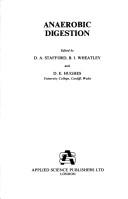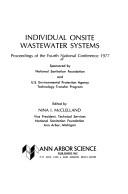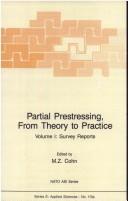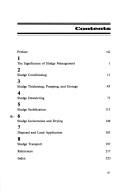| Listing 1 - 10 of 52 | << page >> |
Sort by
|
Book
ISBN: 902860510X Year: 1980 Volume: vol 35 Publisher: Alphen aan den Rijn Sijthoff & Noordhoof
Abstract | Keywords | Export | Availability | Bookmark
 Loading...
Loading...Choose an application
- Reference Manager
- EndNote
- RefWorks (Direct export to RefWorks)
Book
ISBN: 0853348405 Year: 1979 Publisher: London Applied Science Publishers
Abstract | Keywords | Export | Availability | Bookmark
 Loading...
Loading...Choose an application
- Reference Manager
- EndNote
- RefWorks (Direct export to RefWorks)

ISBN: 0853349045 9780853349044 Year: 1980 Publisher: London: Applied science publishers,
Abstract | Keywords | Export | Availability | Bookmark
 Loading...
Loading...Choose an application
- Reference Manager
- EndNote
- RefWorks (Direct export to RefWorks)

ISBN: 0250402106 Year: 1978 Publisher: Ann Arbor (Mich.) Ann Arbor Science
Abstract | Keywords | Export | Availability | Bookmark
 Loading...
Loading...Choose an application
- Reference Manager
- EndNote
- RefWorks (Direct export to RefWorks)

ISBN: 9024728312 9400968620 9400968604 Year: 1983 Volume: vol 66 Publisher: Boston The Hague Dordrecht Lancaster Martinus Nijhoff Publishers
Abstract | Keywords | Export | Availability | Bookmark
 Loading...
Loading...Choose an application
- Reference Manager
- EndNote
- RefWorks (Direct export to RefWorks)

ISBN: 0824070623 Year: 1979 Publisher: New York ; London Garland STPM Press
Abstract | Keywords | Export | Availability | Bookmark
 Loading...
Loading...Choose an application
- Reference Manager
- EndNote
- RefWorks (Direct export to RefWorks)
Dissertation
ISBN: 9789460186271 Year: 2013 Publisher: Leuven Katholieke Universiteit Leuven
Abstract | Keywords | Export | Availability | Bookmark
 Loading...
Loading...Choose an application
- Reference Manager
- EndNote
- RefWorks (Direct export to RefWorks)
Biological wastewater treatment is the most widespread method for treating both municipal and industrial wastewater. The driving force in the process is the activated sludge which is organized in aggregates or flocs and consists of a heterogeneous microbial community. The process is able to eliminate, in a cost-efficient manner, organic components, too high concentrations of nutrients and other pollutants from wastewater. At the end of the process, the purified water needs to be separated from the activated sludge in a solid-liquid separation step. This step can be achieved by sedimentation under the influence of gravity or by filtration over a membrane. Introduction of membrane separation was done in order to overcome settling problems in conventional systems caused by poor floc formation, better known as bioflocculation. In brief, bioflocculation can be seen as the aggregation of primary particles (e.g., individual bacteria) into microcolonies which then further aggregate to larger flocs. Despite extensive research done in the past on bioflocculation and its relation with sludge settling, and more recently also with membrane fouling, the causes for (de)flocculation are still far from being understood. This lack of understanding is mainly due to the complex interactions between activated sludge, influent characteristics and the applied process conditions. The general hypothesis is that the activated sludge bioflocculation condition is the key to enhance sludge settling and reduce membrane fouling in conventional activated sludge systems and membrane bioreactors, respectively.The focus of this dissertation has been on investigating the impact of a change in influent characteristics on activated sludge bioflocculation which is highly relevant in an industrial context. To this end, long-term experiments were performed in lab-scale conventional systems. Lab-scale systems were used to be able to better control and decouple the different influent and operational characteristics. In this dissertation, three types of changes in influent characteristics were applied: (i) a change in influent monovalent-to-polyvalent cation ratio, (ii) a change in reactor loading rate and (iii) a change in carbon source. For all experiments the other bioflocculation influencing parameters (influent cation ratio, shear and feeding pattern) were kept constant at a value that normally would promote good bioflocculation. The first experiment investigated the effect of a change in influent monovalent-to-polyvalent cation ratio from 1.5 to 15. The results led to the observation that the bioflocculation condition of the activated sludge cannot be monitored accurately by means of the sludge volume index. The first transition revealed no significant change in sludge settleability. However, significant changes on a microscopic level were detected by means of image analysis because of a temporary deflocculation event was observed and quantified by an increase in the relative amount of primary particles and microcolonies. The second transition, on the other hand, resulted in an immediate deflocculation and subsequent decreasing settleability.During a second experiment the effect of a change in reactor loading rate from a nominal value to a high or low value was investigated. The distinction between erosion and fragmentation was made based on image analysis data. The applied increase in reactor loading rate led, in this case, to an increased erosion of the activated sludge as quantified by an increase in the relative amount of primary particles. The applied decrease in reactor loading rate led to activated sludge fragmentation, which is characterized by a significant decrease in floc size. Although the changes in bioflocculation condition of the sludge were significant in both cases, the impact on the solid-liquid separation step was negligible. The ratio of proteins to polysachariden in the extractable extracellular polymeric substances could be linked to the different bioflocculation conditions.Finally, the impact of alternating carbon sources (i.e., glucose and starch) on the bioflocculation condition of the activated sludge was investigated. The results emphasize the importance of the protein fraction of the extractable extracellular polymeric substances. After an adaptation period to the applied feeding conditions an increase in sludge volume index was observed for all reactors. The decrease in sludge settleability could be related to the increase in the relative primary particle amount and the protein fraction of the extractable extracellular polymeric substances. In addition, the results seem to be independent of the applied feeding condition.The resulting observations led to the conclusion that the sludge volume index is not an accurate parameter for activated sludge bioflocculation assessment. Quantifying floc size and the relative amount of primary particles and/or microcolonies by means of microscopic image analysis, on the other hand, can provide more and better insights in the (de)flocculation phenomena going on at the level of the activated sludge flocs. In addition, these parameters can be attributed to certain activated sludge characteristics, such as, extracellular polymeric substances. Of the latter, the impact of the protein fraction has proven to be very important in connection to the applied changes in influent conditions. In addition, changes in microbial community associated with different activated sludge bioflocculation conditions were observed. In general, it must be stressed that there are no standard procedures available to measure these activated sludge characteristics which makes comparison between different investigations difficult, if not impossible.In general, it can be concluded that changes in influent characteristics can significantly affect the bioflocculation condition of the activated sludge and even result in severe deflocculation and subsequent inefficient solid-liquid separation. However, a change in bioflocculation condition does not always mean an immediate deterioration in settling capacity. Nevertheless, when appropriately monitored, bioflocculation characteristics, such as, the relative amount of primary particles, can better explain settleability or other failures of which the onset can be traced back to a preceding change in influent characteristics or process conditions. However, more research on activated sludge bioflocculation is definitely desirable.
Dissertation
ISBN: 9789460188213 Year: 2014 Publisher: Leuven Katholieke Universiteit Leuven
Abstract | Keywords | Export | Availability | Bookmark
 Loading...
Loading...Choose an application
- Reference Manager
- EndNote
- RefWorks (Direct export to RefWorks)
Book
ISBN: 9789077983225 Year: 2007 Publisher: Leidschendam Quist Publishing
Abstract | Keywords | Export | Availability | Bookmark
 Loading...
Loading...Choose an application
- Reference Manager
- EndNote
- RefWorks (Direct export to RefWorks)
628.3 --- Afvalwaterzuivering --- Slib --- Sewage. Surface and foul water. Properties and treatment. Sewage works --- Agrotechnology and Food Sciences. Engineering --- Waste treatment --- Waste Water Treatment --- Waste Water Treatment. --- 628.3 Sewage. Surface and foul water. Properties and treatment. Sewage works
Book
ISBN: 0071008241 Year: 1991 Publisher: New York (N.Y.) : McGraw-Hill,
Abstract | Keywords | Export | Availability | Bookmark
 Loading...
Loading...Choose an application
- Reference Manager
- EndNote
- RefWorks (Direct export to RefWorks)
Agrotechnology and Food Sciences. Engineering --- Waste treatment --- Waste Water Treatment. --- Afvalwater: engineering --- Waterzuivering --- 628.3 --- 628.3 Sewage. Surface and foul water. Properties and treatment. Sewage works --- Sewage. Surface and foul water. Properties and treatment. Sewage works
| Listing 1 - 10 of 52 | << page >> |
Sort by
|

 Search
Search Feedback
Feedback About UniCat
About UniCat  Help
Help News
News